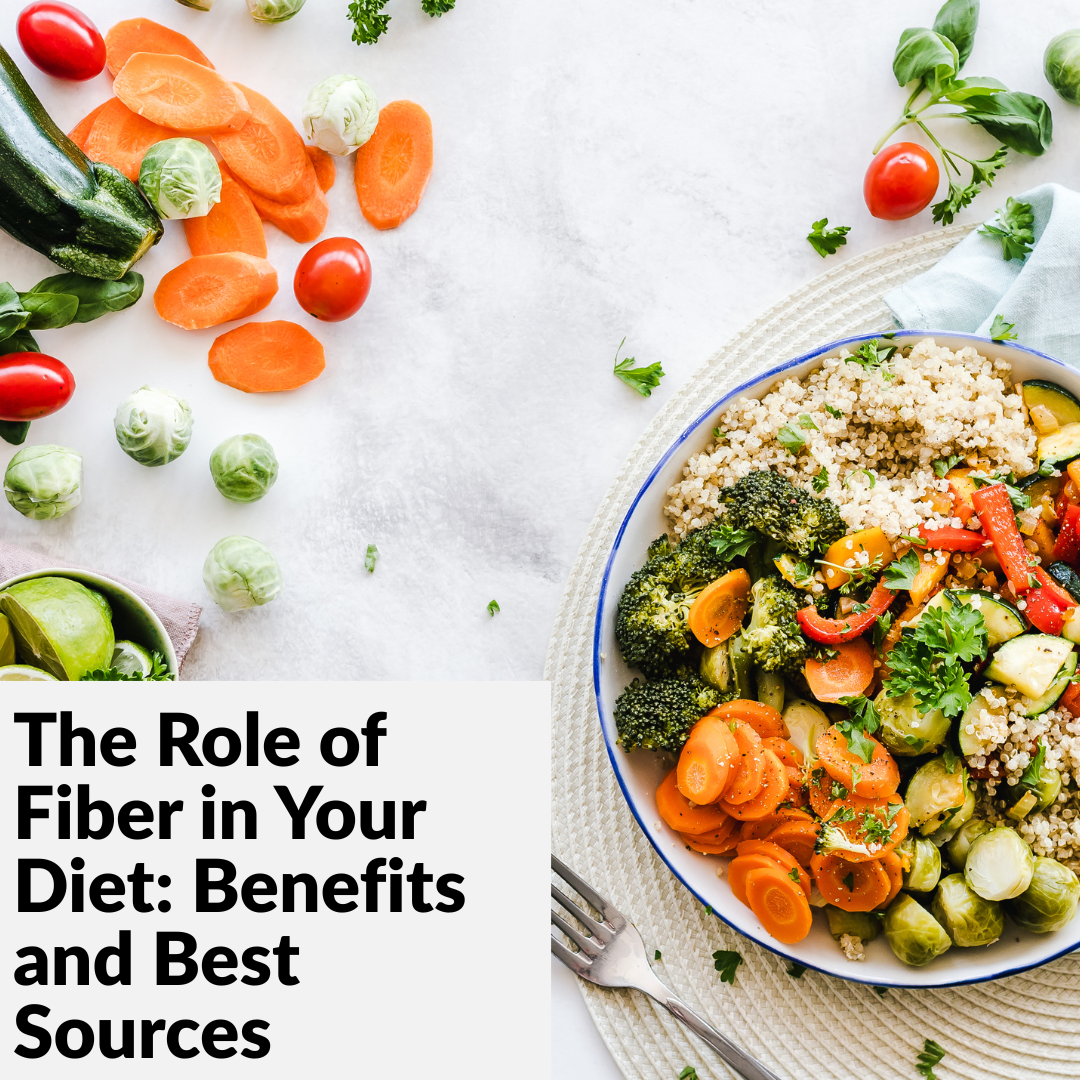
When it comes to nutrition, we often focus on the big players — protein, carbs, and fats — but there’s one nutrient that deserves way more attention: fiber. It doesn’t just “keep things moving.” Fiber plays a massive role in digestion, satiety, blood sugar control, and even long-term weight management. Let’s break down why it matters and how to easily add more of it to your day.
Why Fiber Matters
1. Digestive Health
Fiber adds bulk to your stool and helps keep your digestive system running smoothly. Think of it as a gentle broom for your intestines — it sweeps out waste, supports regularity, and helps prevent constipation.
Beyond that, soluble fiber (found in foods like oats, apples, and chia seeds) acts as food for your gut bacteria. This process, called fermentation, produces short-chain fatty acids that reduce inflammation and support a healthy gut lining.
2. Weight Management
If you’ve ever felt full after a salad or a bowl of oatmeal, fiber is to thank. High-fiber foods slow digestion, helping you feel fuller for longer and reducing the urge to overeat. This makes fiber one of your best tools for sustainable fat loss — not by restriction, but by improving hunger and fullness cues.
3. Blood Sugar Control
Fiber slows the absorption of sugar into your bloodstream, helping prevent spikes and crashes in blood glucose levels. This is especially beneficial if you’re managing insulin resistance, PCOS, or simply trying to keep your energy steady throughout the day.
4. Heart Health
Soluble fiber binds to cholesterol in your digestive tract and helps flush it out of the body, which can help lower LDL (bad) cholesterol levels. That means fiber isn’t just good for your gut — it’s also good for your heart.
How Much Fiber Do You Need?
Most adults should aim for:
-
Women: 25–30 grams per day
-
Men: 30–38 grams per day
But the average person only gets about half of that. So if you’re not hitting your targets, you’re not alone — and the good news is, increasing your intake doesn’t have to be complicated.
High-Fiber Foods to Add to Your Day
Here are some easy and tasty ways to hit your fiber goals:
| Category | Food | Fiber (per 100g) |
|---|---|---|
| Fruits | Raspberries (6.5g), Pears (3.1g), Apples (2.4g), Bananas (2.6g) | |
| Veggies | Broccoli (2.6g), Carrots (2.8g), Brussels Sprouts (3.8g), Sweet Potato (3.3g) | |
| Legumes | Lentils (7.9g), Chickpeas (7.6g), Black Beans (8.7g), Edamame (5.2g) | |
| Grains | Oats (10g), Quinoa (2.8g), Brown Rice (1.8g), Barley (17.3g) | |
| Nuts & Seeds | Chia Seeds (34g), Flaxseeds (27g), Almonds (12g), Pistachios (10g) |
Simple Ways to Boost Your Fiber Intake
-
Start your day with overnight oats or a smoothie with chia and berries.
-
Swap white rice for quinoa or barley.
-
Add beans or lentils to soups, salads, or tacos.
-
Snack on fruit and nuts instead of ultra-processed snacks.
-
Try mixing veggies into every meal — grated zucchini in oats, spinach in eggs, or roasted veggies with dinner.
A Quick Note on Hydration
As you increase fiber, drink more water. Fiber absorbs water to do its job, and without it, you could end up feeling bloated or constipated. A good rule of thumb: aim for about ½ your body weight in ounces of water per day.
Fiber is one of the most underrated nutrients for long-term health, digestion, and weight management. When you make small, consistent changes to include more fiber-rich foods, you’ll notice better energy, improved gut health, and more balanced meals — without feeling deprived.
Leave a Comment
You must be logged in to post a comment.
0 Comments